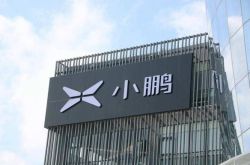Introducing Horizon Robotics' Autonomous Driving Solutions
![]() 05/20 2025
05/20 2025
![]() 591
591
Since its inception in 2015, Horizon Robotics has been dedicated to integrating deep neural network computing power into specialized chips, forming the backbone of "Intelligence for All Things." Dr. Yu Kai, the company's founder and CEO, envisioned Horizon becoming the "Wintel" of the robotic era – combining a robust software ecosystem akin to Microsoft with hardware foundations on par with Intel. Guided by this vision, Horizon has developed a comprehensive technology platform encompassing IP licensing, integrated hardware, and software solutions, providing automakers and Tier 1 suppliers with a complete, flexible, and efficient intelligent driving development environment.
At the hardware level, Horizon has introduced the Journey series of automotive-grade intelligent computing solutions, with the 6th generation product (codenamed J6) launched in April 2024 playing a pivotal role. The J6 series offers computing power ranging from 10TOPS to 560TOPS, integrating various computing resources such as BPU (dedicated acceleration unit), CPU, GPU, and MCU through a multi-core heterogeneous architecture. This setup caters to both end-to-end Advanced Driver Assistance Systems (ADAS) and full-scenario Autonomous Driving (AD) requirements. The high-end J6P flagship version natively supports large-parameter Transformer algorithms, enabling efficient deployment of end-to-end prediction and interaction game models. The mid-range J6E/M, on the other hand, optimizes costs and performance for high-frequency functions like highway piloting and urban memory driving, facilitating more vehicle models to achieve intelligent driving equity.

Horizon Journey 6 Series Chips
To harness the full potential of algorithms and models on chips, Horizon has independently developed the BPU architecture, which has evolved through three generations: Bernoulli, Bayes, and Nash. The Bernoulli architecture focuses on efficient computation at the perception level, optimizing energy efficiency from floating-point to fixed-point. The Bayes architecture incorporates predictive module support, establishing a closed loop from perception to prediction. The Nash architecture, however, includes decision-making and interaction game models within hardware acceleration, catering to full-scenario NOA (Navigate on Autopilot) needs and maximizing system-level efficiency.

Horizon's BPU Architecture: Evolving with Autonomous Technology
Complementing the hardware is Horizon's comprehensive intelligent driving software stack and mass production development platform. In 2016, Horizon proposed the concept of end-to-end evolution for autonomous driving. Based on the end-to-end (E2E) world model and interaction game algorithm framework, Horizon released the Sparse4D perception end-to-end algorithm in 2022 and won the Best Paper Award at CVPR in 2023 with the UniAD end-to-end autonomous driving large model. The Horizon Super Drive (HSD) full-scenario intelligent driving system integrates these advanced algorithms, delivering a seamless, highly human-like, and nationally consistent intelligent driving experience across diverse road conditions, including Chongqing's sharp curves and narrow slopes, Guangzhou's bustling streets, and Suzhou's ancient streets and narrow alleys. Through the "three-network integration" design, sensor data, high-definition maps, and navigation information are unified as inputs, ensuring lossless information transfer from perception to planning, control, and decision-making, significantly enhancing the system's generalization capabilities and safety redundancy.
Beyond the technology platform, Horizon's business model offers flexibility, ranging from IP licensing to computing solutions, complete solutions, and deep joint development. Customers can freely choose combinations of algorithms, software, chips, and toolchains based on their R&D capabilities and project needs. Leading automakers and Tier 1 suppliers such as BYD, Volkswagen, Li Auto, Xpeng, Bosch, Continental, and ZF are collaborating with Horizon in various modes to jointly promote the mass production of intelligent driving technologies. This "locally rooted, globally oriented" cooperation approach positions Horizon as a leader in China while equipping it with the capability to empower overseas markets.
In the Chinese market, with BYD's "Universal Intelligent Driving" strategy advancing in February 2025, the high-speed NOA function has been extended to models priced around RMB 100,000. After the entire lineup was equipped with "Sky Eye," the Journey 6 series also witnessed its first large-scale mass production. In BYD's first high-end intelligent driving three-camera solution, the Horizon J6M is paired with the Orin N to provide various functional experiences for 21 models, including high-speed piloting, urban memory piloting, and automatic parking. Among customers like Li Auto and Bosch, the Journey 3 to Journey 6 have also undergone a generational evolution from Mono to Pilot to SuperDrive, effectively shortening R&D cycles and system integration costs.

BYD Sky Eye Configuration Overview
Horizon places significant emphasis on the mass production engineering aspect. Each generation of chips and solutions comes with a mature mass production development platform, providing hardware and software reference designs, circuit board and system integration examples, and continuously iterated development toolchains. This helps customers achieve agile development and efficient delivery in various stages, including functional verification, road testing and calibration, and mass production. As a result, by the end of 2024, the cumulative shipments of Journey series chips had exceeded seven million, with the prospect of surpassing the ten million mark in 2025, empowering more mid-to-high-end and economical vehicle models.
It is projected that the global market for Advanced Driver Assistance Systems (ADAS) and high-level Autonomous Driving (AD) will grow from approximately RMB 61.9 billion in 2023 to over RMB 1 trillion by 2030, with a compound annual growth rate of nearly 50%. In this macrocycle, Horizon stands to benefit significantly from the trends of intelligent driving equity and full-scenario advancement. Leveraging its zero-to-one self-developed product matrix with software and hardware synergy and flexible and diverse cooperation models, Horizon is poised to drive the mass production and installation of HSD in vehicles. Coupled with dual upgrades in algorithms and computing power, full-scenario L3 and even higher-level autonomous driving will gradually take root in both China and overseas markets.

Market Size of Advanced Driver Assistance Systems and High-level Autonomous Driving Solutions (Unit: Billion Yuan)
Looking ahead, Horizon has not only accumulated patents and technologies in the automotive field but also made early forays into the realm of robot chips. Its subsidiary brand "Digua Robotics" has launched the Rising Sun series of chips for various scenarios, including sweeping robots, educational companions, lawn-mowing robots, and quadruped robots. Among them, the Rising Sun 3 has achieved mass production in brands like Ecovacs, Baidu, and Midea; the Rising Sun 5, based on the BPU Bayes architecture, offers up to 10TOPS of computing power, supporting complex models such as end-to-end, Transformer, and BEV. This industrial expansion not only echoes Dr. Yu Kai's strategic vision that "intelligent vehicles are the third-generation terminals, with robots as the ultimate goal" but also lays a diverse foundation for the next phase of Horizon's growth.
-- END --





